In the wake of Olympian Evi Van Acker’s intestinal infection—believed to have been caused by water pollution—some facts and figures on Brazil’s long-running water problem.
By Madeleine Thomas
In their 2009 bid to host this year’s Summer Olympics, government officials in Rio de Janeiro pledged to upgrade the state’s sewage system, bringing the amount of treated waste there to 80 percent. But amid fresh reports of extreme levels of antibiotic-resistant and fecal bacteria befouling the very waters of Guanabara Bay designated for sailing, rowing, and triathlons, Olympic athletes are doing whatever they can to protect themselves against illness during the Games. Many have taken to dousing their paddles with bleach, covering their water bottles with plastic bags, donning antimicrobial suits, or trying to keep their mouths shut while swimming or sailing. The World Health Organization advises all athletes making contact with the waters of Guanabara Bay to “cover cuts with waterproof plasters prior to exposure, try to avoid swallowing water, wash/shower after exposure and avoid going in the water for several days after heavy rainfall.” One water-related viral infection has already been confirmed in a Belgian sailor. The photographs below offer a closer look into the conditions Olympians are facing in Guanabara Bay this summer.
A couch rests among pollution along the edge of Guanabara Bay, Brazil. (Photo: Mario Tama/Getty Images)
About 16 million people live surrounding Guanabara Bay, the second largest bay on Brazil’s coast. As many as four million do not have access to a sewage system. More than 800 tons of solid waste, rife with fecal and drug-resistant bacteria from homes and hospitals, empty into Guanabara Bay each day, according to a 2015 study of the Bay’s environmental and sanitary conditions.
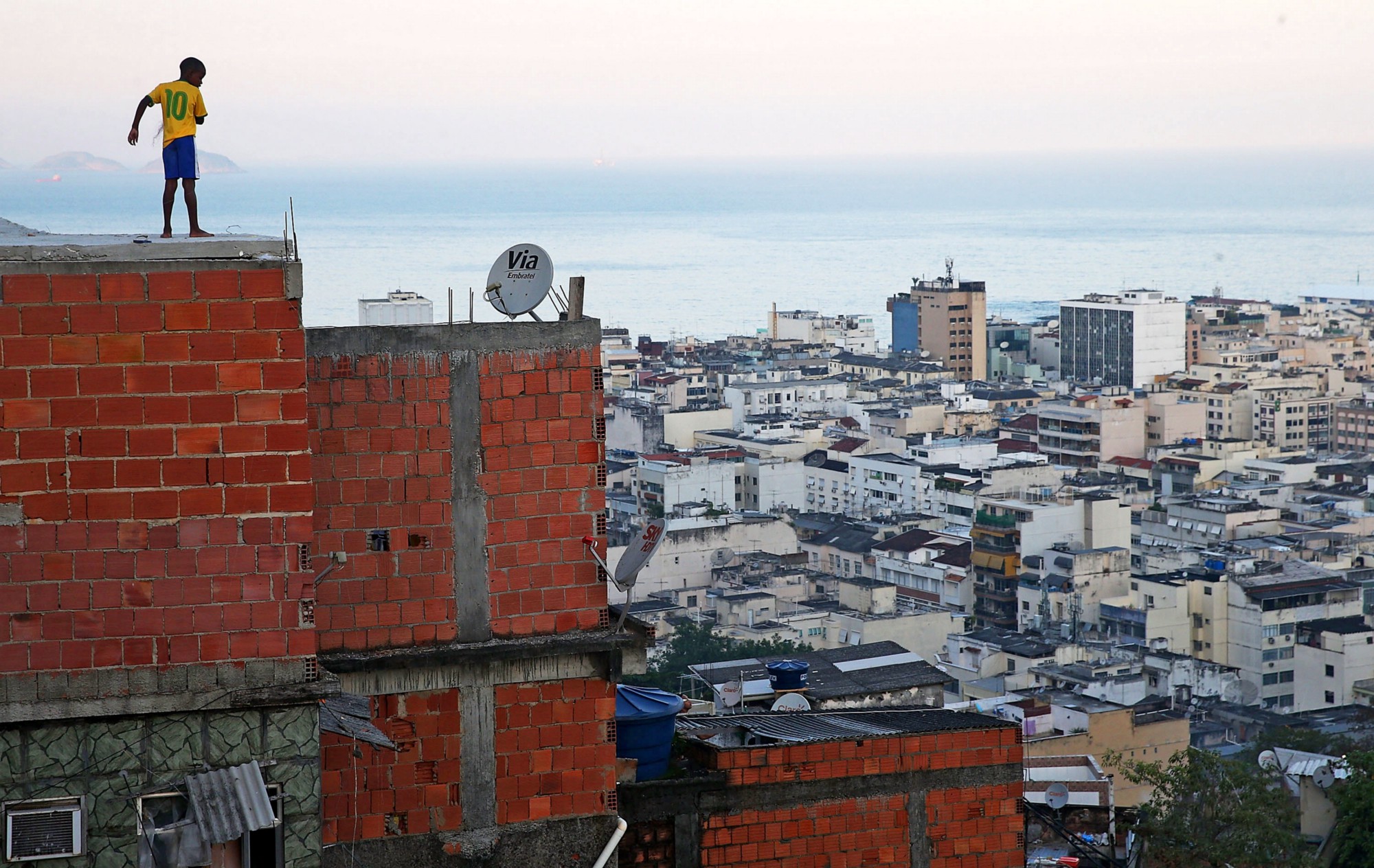
Rio de Janeiro, Brazil. (Photo: Mario Tama/Getty Images)
About 78 percent of Rio de Janeiro’s households have access to sanitation, although it’s arguable whether this statistic includes homes located in the city’s favelas, or slums.
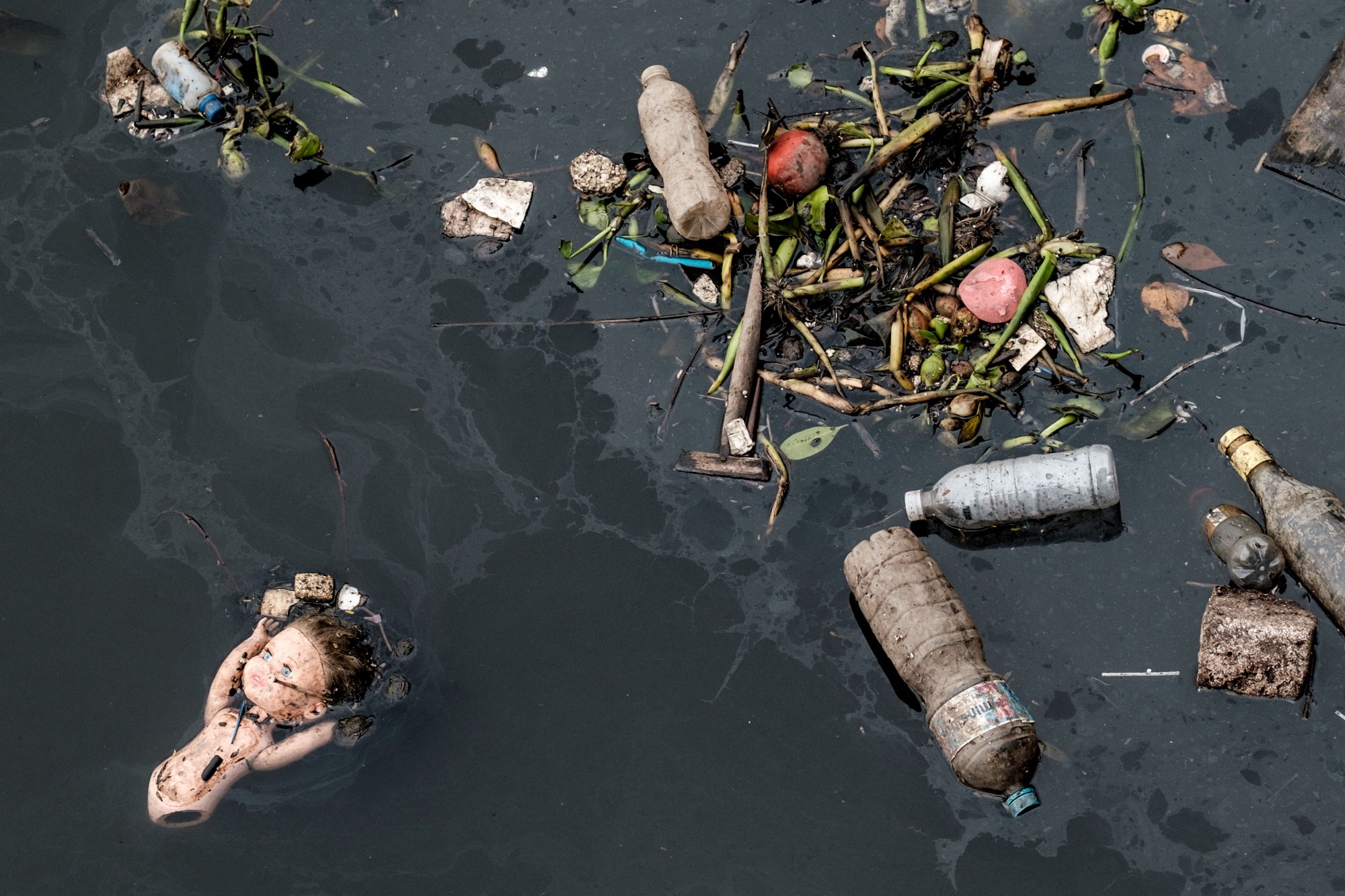
Floating debris in Guanabara Bay. (Photo: Yasuyoshi Chiba/AFP/Getty Images)
Untreated sewage flows directly into Guanabara Bay as a result. In Duque de Caxias alone, a city in southeastern Brazil, infant mortality has reached as high as almost 24 percent due to the insanitary conditions of the Bay’s waters.
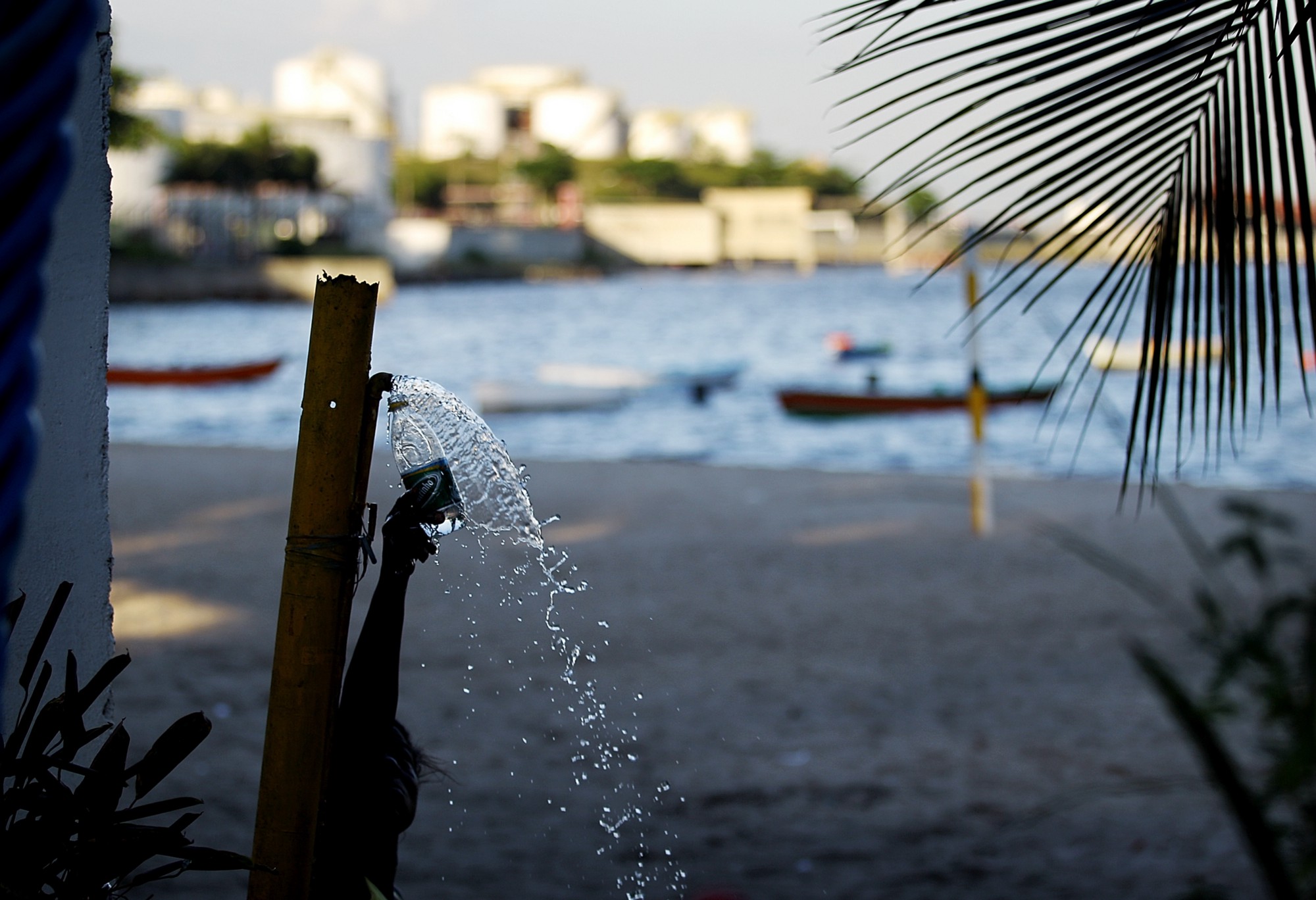
A woman refills her water bottle from a spigot near the shoreline of the polluted waters of Guanabara Bay. (Photo: Mario Tama/Getty Images)
Water-transmitted diseases are responsible for about 65 percent of all the hospitalizations in Brazil. Drug-resistant bacteria have been found around Flamengo Beach, where Olympic sailing competitions are scheduled. Some of these “super-resistant” strains are able to withstand antibiotics up to 600 times higher than what would normally be administered for treatment, according to studies.

Tons of dead fish float on the waters of the Rodrigo de Freitas lagoon in Rio de Janeiro, Brazil. (Photo: Christophe Simon/AFP/Getty Images)
A massive fish kill in April wiped out 50 tons of twait shad from Guanabara Bay. While government officials cited a sudden change in water temperature as the cause of the mysterious die-off, scientists blamed the waterway’s extreme pollution as the root cause of the kill, according to reports.
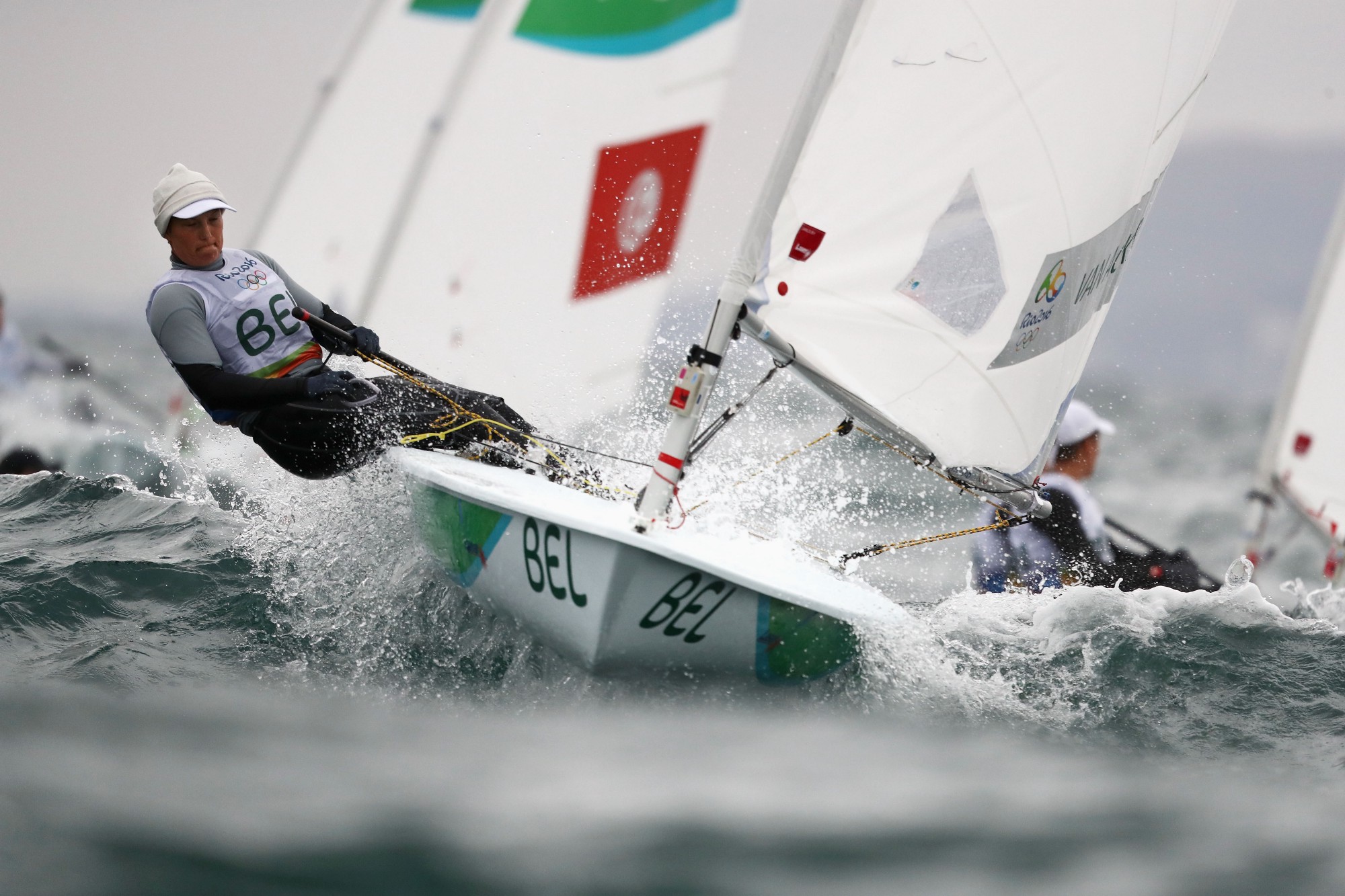
Evi Van Acker in the Women’s Laser Radial class. (Photo: Clive Mason/Getty Images)
On Thursday, Belgian sailor Evi Van Acker developed a severe intestinal infection after training in Guanabara Bay in July, the Associated Press reports. She is believed to be the first Olympic competitor who has fallen ill from the Bay’s fetid waters so far.
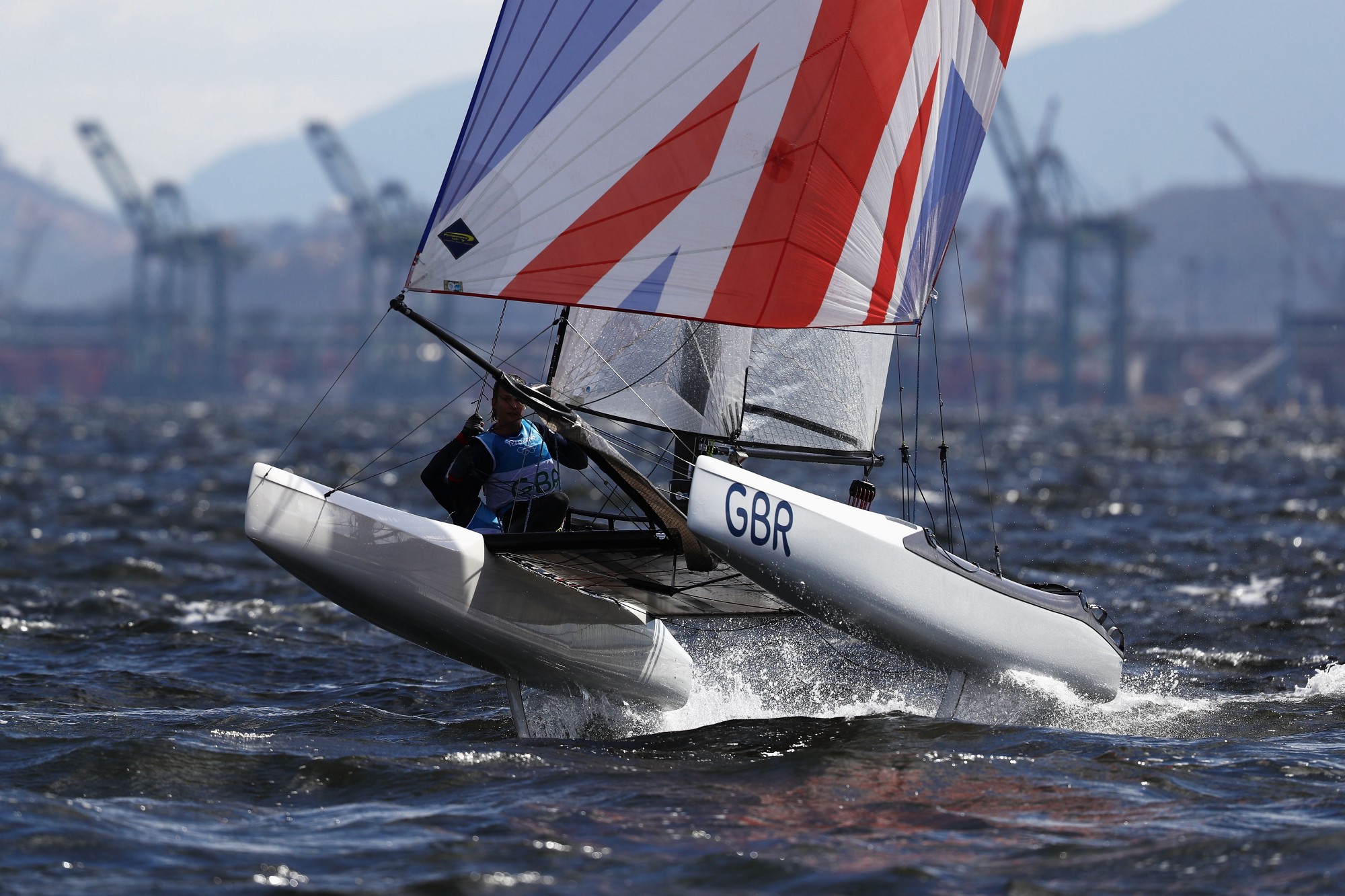
British sailors Ben Saxton and Nicola Groves compete in the Nacra 17 Mixed class at Marina da Gloria. (Photo by Clive Mason/Getty Images)
Some of the most polluted areas of Guanabara Bay include the Rodrigo de Freitas Lagoon — the site of Olympic rowing — and the Marina da Gloria, where sailing races will begin, according to a 16-month investigation by the AP published earlier this month. Water samples taken in March and again in June at the Rodrigo de Freitas Lagoon found 1.73 billion adenoviruses per liter, and 248 million adenoviruses per liter, respectively, the AP reports.
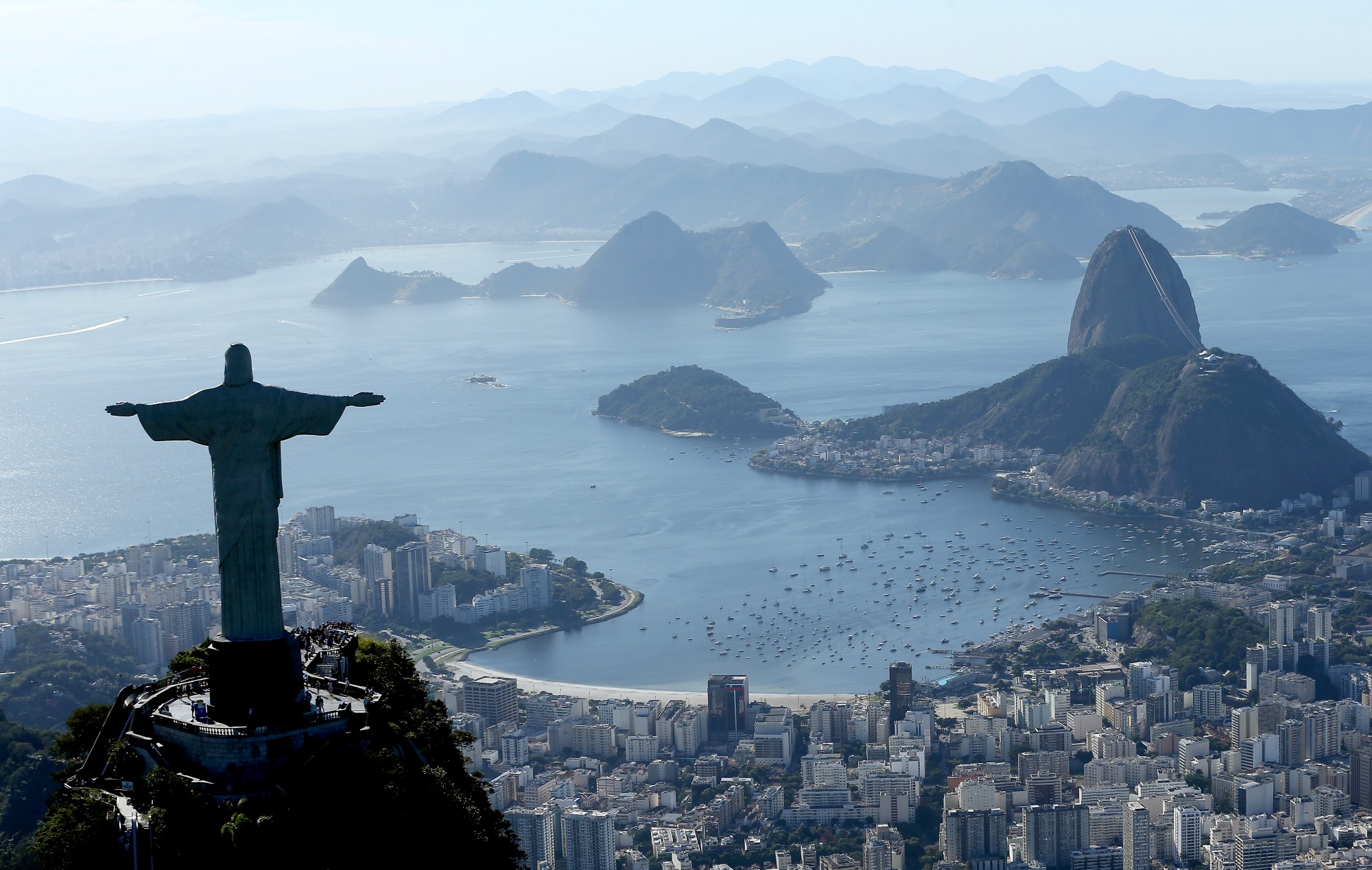
Aerial view of Christ the Redeemer, Flamengo Beach, the Sugar Loaf, and Guanabara Bay in Rio de Janeiro, Brazil. (Photo: Matthew Stockman/Getty Images)
“Don’t put your head under water,” Valerie Harwood, a biomedical expert and a professor at the University of South Florida cautioned APreporters. Harwood has just cause for concern: Swallowing just three teaspoons of the Bay’s water is enough to guarantee contracting some sort of viral infection, like a stomach or respiratory illness, according to AP.In much rarer cases, ingestion has also been linked to inflammation of the brain or heart.

||





